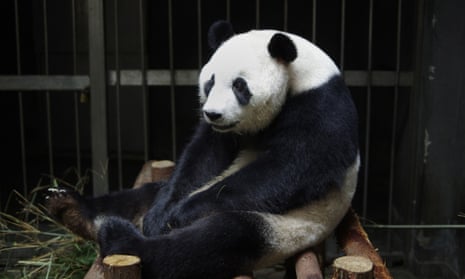Hopes that tiny panda paws would be seen in the world’s first live-broadcast cub delivery have been dashed after Chinese experts suggested the “mother” may have been focusing more on extra bun rations than giving birth.
The slated star of the show, giant panda Ai Hin, had shown signs of pregnancy at the Chengdu Giant Panda Breeding Research Centre, according to state news agency Xinhua.
A live broadcast of the event was planned but Xinhua said her “behaviours and physiological indexes returned to normal”, citing experts saying she experienced a “phantom pregnancy”.
The breeding centre, in China’s south-western province of Sichuan, commonly moves pandas that are thought to be pregnant into single rooms with air conditioning and around-the-clock care.
“They also receive more buns, fruits and bamboo, so some clever pandas have used this to their advantage to improve their quality of life,” Wu Kongju, an expert at the base told Xinhua.
Phantom pregnancy is said to be common among the endangered animals. Many continued to display pregnant behaviour after noticing the difference in treatment they received, Xinhua said.
Six-year-old Ai Hin showed reduced appetite, less mobility and a surge in hormones when her “pregnancy” was first detected, the news agency said, before further observations concluded it was fake.
The giant panda’s natural habitat is in the mountainous south-west of China. But they have a notoriously low reproductive rate and are under pressure from factors such as habitat loss.
China has about 1,600 pandas living in the wild and another 300 held in captivity.
“Only 24% of females in captivity give birth, posing a serious threat to the survival of the species,” Xinhua said.

Comments (…)
Sign in or create your Guardian account to join the discussion